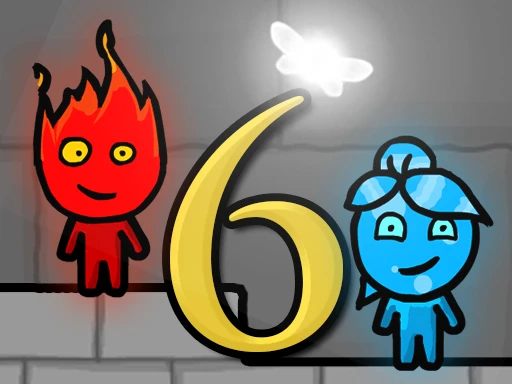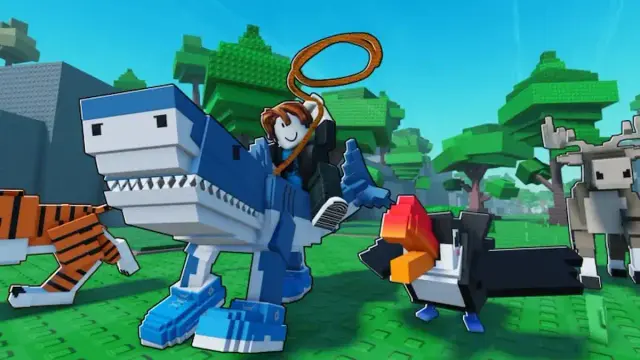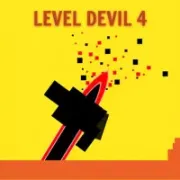
Puzzle

Drift Boss Arena
More games to drift through
Swap tabs in seconds and keep the momentum going with another arcade favorite.

Puzzle

Action

Adventure

Arcade

Racing

Platformer

Puzzle

Simulation

Survival

Sports

Puzzle

Simulation

Simulation

Simulation

Arcade
Puzzle
Conquer spike-filled stages in Level Devil 3: outsmart surprise traps, react with split-second jumps, and unlock smoother routes as your skill rises from beginner to master.
Level Devil 3 is a precision platform puzzler that takes the series’ trademark trickery and dials it up with sharper level design, nastier feints, and a constant stream of gotchas that force you to think before you leap. Instead of simply stacking more spikes, Level Devil 3 rewrites the rhythm of movement: floors open when you least expect, springs launch at the wrong height, and even safe blocks carry hidden conditions. The goal never changes—reach the exit—but the route mutates under pressure, demanding flexible plans and cool execution.
From the opening screen, Level Devil 3 communicates a blunt thesis: reflexes matter, but pattern reading matters more. Every room is a small puzzle wrapped in a jump test, and both parts punish impatience. If you enjoy shaving seconds off a clean run or cracking the mischievous logic behind an impossible-looking corridor, Level Devil 3 is built to hook you for hours of incremental mastery.
Where earlier chapters taught you to distrust the obvious, Level Devil 3 advances the conversation by making the obvious occasionally correct—just long enough to bait a greedy mistake. Expect dynamic hazards that respond to your position, traps that key off your jump height, and routes that appear safe but become lethal if you arrive one frame early. These subtle rule bends keep victories fresh and encourage experimentation. By the time you reach midgame, you’ll have a toolbox of mental checks: pause before a weirdly empty stretch, test a trigger from a different tile, and verify ceiling safety before committing to a full hop. This cadence—probe, learn, and execute—defines the heart of Level Devil 3.
The blueprint is clean: move, jump, and survive to the exit. Yet Level Devil 3 overlays that simplicity with layered bait. Low spikes might be harmless while a distant wall is the real killer. A coin on a pedestal might be legit, but the platform beneath it could collapse if you land in the center. The most consistent path to progress in Level Devil 3 is to treat every screen like a lab: inch forward, observe micro-animations, then rehearse a short sequence until muscle memory crystallizes.
Movement is crisp and readable: arrow keys or WASD to move, space to jump. The jump arc favors deliberate, midair corrections. Because timing windows are tight, Level Devil 3 rewards feathering inputs rather than mashing. Short hops are essential for trigger testing, while full jumps clear wider pits when you’ve confirmed the ceiling is honest. With practice, you’ll string moves into a smooth tempo that makes Level Devil 3 feel less like punishment and more like a dance you are finally learning to lead.
Before each attempt, scan for asymmetries: one tile that is darker than the rest, a spike row where a single tooth is shorter, a background decal aligned with a suspicious ledge. Level Devil 3 places many tells in the art and timing. Listen, too: a faint click may signal a delayed floor, and a soft spring sound can warn that a launcher armed early. Put differently, Level Devil 3 invites you to develop detective habits so you can run faster with fewer deaths.
Start with controlled micro-steps. Nudge to the edge of a platform and tap jump to test for false floors. Use the minimum necessary inputs until the room’s intent becomes clear. The first milestone in Level Devil 3 is learning when to stop moving. Standing still for half a beat often prevents an ambush trigger. Celebrate small checkpoints—cleaning one nasty drop or mastering a new short-hop cadence—because momentum in Level Devil 3 is psychological as much as mechanical.
Veterans will find that buffer timing—pressing jump just before landing—stabilizes sequences that feel frame-tight. Another high-value habit is position anchoring: commit to consistent tile markers so your setup jumps always start from the same pixel. In long rooms, break the plan into micro-segments and rehearse each independently. This is where Level Devil 3 shines; its layouts are engineered to be learned in slices, then stitched into a seamless route that survives the engine’s many curveballs. The more you discipline your starting positions, the more Level Devil 3 turns from chaos into choreography.
First, the trust fall: an empty hall that punishes over-jumping with a pop-up spike. Walk, don’t sprint. Second, the ceiling kiss: a low overhang that converts a full jump into a lethal head-bonk. Use a short hop. Third, the double fake: a collapsing platform that only falls if you land in the dead center. Edge it and you're safe; rush it and you're toast. Recognizing these conditional hazards is the difference between brute-forcing a room and dancing through it with intent.
Map tricky rooms into chunks, rehearse each slice until the timing feels automatic, then stitch them together without hesitating. When a new twist appears, log it mentally and update the route. That discipline keeps Level Devil 3 brilliant instead of brutal.
Need more drift intel? Read the Drift Boss Help Center or contact our crew through the support page.